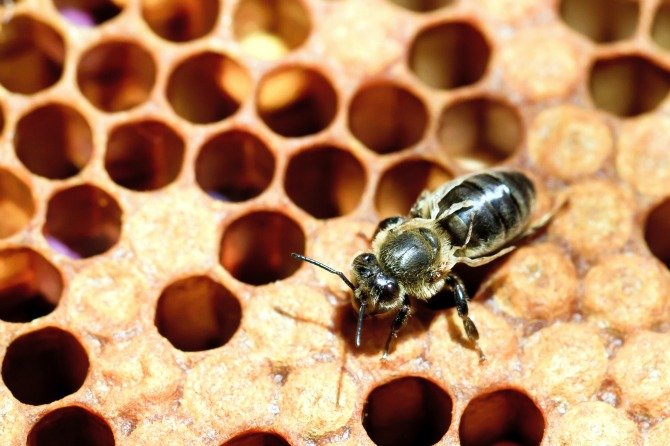The US Department of Agriculture (USDA) and the US Environmental Protection Agency (EPA) recently released a comprehensive scientific report on honey bee health. The report states that there are multiple factors playing a role in honey bee colony declines, including parasites and disease, genetics, poor nutrition and pesticide exposure.
“There is an important link between the health of American agriculture and the health of our honeybees for our country’s long term agricultural productivity,” said Agriculture Deputy Secretary Kathleen Merrigan.
“The forces impacting honeybee health are complex and USDA, our research partners, and key stakeholders will be engaged in addressing this challenge.”
“The decline in honey bee health is a complex problem caused by a combination of stressors, and at EPA we are committed to continuing our work with USDA, researchers, beekeepers, growers and the public to address this challenge,” said Acting EPA Administrator Bob Perciasepe.
“The report we’ve released is the product of unprecedented collaboration, and our work in concert must continue. As the report makes clear, we’ve made significant progress, but there is still much work to be done to protect the honey bee population.”
In October 2012, a conference on Honey Bee Health, led by federal researchers and managers, along with Pennsylvania State University, was convened to synthesize the current state of knowledge regarding the primary factors that scientists believe have the greatest impact on managed bee health.
Key findings include:
Parasites and Disease Present Risks to Honey Bees:
The parasitic Varroa mite is recognized as the major factor underlying colony loss in the US and other countries. There is widespread resistance to the chemicals beekeepers use to control mites within the hive. New virus species have been found in the US and several of these have been associated with Colony Collapse Disorder.
Increased Genetic Diversity is Needed:
- US honeybee colonies need increased genetic diversity. Genetic variation improves bees thermoregulation (the ability to keep body temperature steady even if the surrounding environment is different), disease resistance and worker productivity.
- Honey bee breeding should emphasize traits such as hygienic behavior that confer improved resistance to Varroa mites and diseases.
Poor Nutrition Among Honey Bee Colonies:
- Nutrition has a major impact on individual bee and colony longevity. A nutrition-poor diet can make bees more susceptible to harm from disease and parasites. Bees need better forage and a variety of plants to support colony health.
- Federal and state partners should consider actions affecting land management to maximize available nutritional forage to promote and enhance good bee health and to protect bees by keeping them away from pesticide-treated fields.
There is a Need for Improved Collaboration and Information Sharing:
- Best Management Practices associated with bees and pesticide use, exist, but are not widely or systematically followed by members of the crop-producing industry. There is a need for informed and coordinated communication between growers and beekeepers and effective collaboration between stakeholders on practices to protect bees from pesticides.
- Beekeepers emphasized the need for accurate and timely bee kill incident reporting, monitoring, and enforcement.
Additional Research is Needed to Determine Risks Presented by Pesticides:
- The most pressing pesticide research questions relate to determining actual pesticide exposures and effects of pesticides to bees in the field and the potential for impacts on bee health and productivity of whole honey bee colonies.
- An estimated 1/3 of all food and beverages are made possible by pollination, mainly by honey bees. In the United States, pollination contributes to crop production worth $20-30 billion in agricultural production annually. A decline in managed bee colonies puts great pressure on the sectors of agriculture reliant on commercial pollination services. This is evident from reports of shortages of bees available for the pollination of many crops.
*Article provided by the USDA Office of Communications. Photo shows honey Bee with deformed wings caused by the Deformed Wing Virus transmitted by the Varroa mite.









